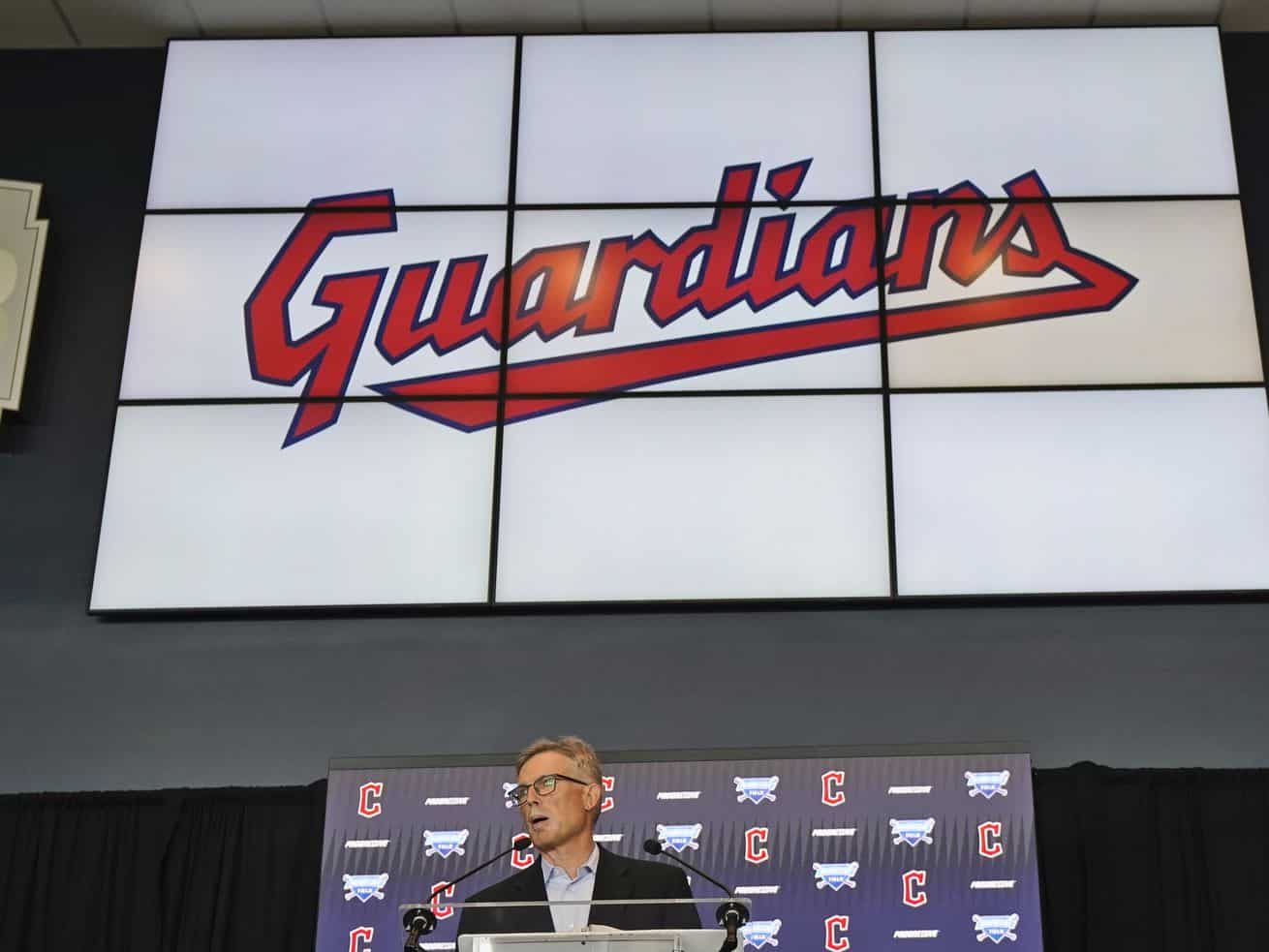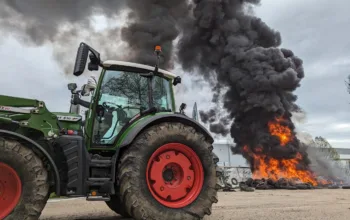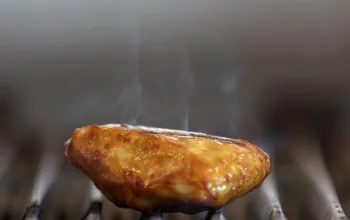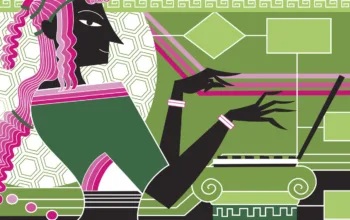I worked for a Native American advocacy group. Getting a sports team like Cleveland’s to change its name was the hardest part of my job.
I have been to innumerable Washington, DC, receptions, but I will always remember one in 2017. I was in the middle of a benign conversation with a lobbyist when he asked the dreaded question, “What do you do?”
I told him I worked at a Native American advocacy organization and focused on issues of agriculture and retiring Native mascots.
“Mascots, like the Redskins?” he replied. “Aren’t there bigger issues you can work on?”
I told him I do work on other things. I was also coordinating efforts around the Bears Ears National Monument, a public land designation protecting Native cultural resources and lands in Utah that the Trump administration was close to removing. “But fighting for things like Bears Ears doesn’t matter if lawmakers, their staff, and their lobbyists don’t see Native people as humans,” I told him. “If they see us as cartoons on the sides of helmets and ball caps, they’ll never see me as an equal in the congressional hearing room.”
He gave me a weird look. “It should be seen as an honor,” he said, then he walked off. He believed equating an entire race of people, my people, to an animal or a sports token was a compliment. I wanted to be seen as a person, and he wanted a way out of the conversation.
On July 23, American sports took a step toward treating my people as human. Major League Baseball and the Cleveland team announced it would stop using the team name — the Indians — and replace it with the Guardians. While a video, narrated by Tom Hanks, made no amends or mention of its previous mascot, the Cleveland team noted that “Cleveland was always the best part of our name.”
But it wasn’t so long ago that changing the team’s name felt far out of reach. As a former policy analyst for the National Congress of American Indians, I worked for years on trying to eliminate mascots — and of all the policy fights and advocacy battles in Indian Country, Native mascots was the hardest issue I ever worked on. This is because it centers on how people see other people. It is about perception. People don’t like being told that their perception is filtered through racism.
We had tried just about everything to get the National Football League to change the name of the Washington team, and they would not budge. Tribal leaders met with the team and NFL management numerous times. We organized social media campaigns. Activists even put together a culture jam and created an entire online presence for the “Washington Redhawks,” an intentional misdirection to get the team to state that they wouldn’t change their racist name. But rallies and pieces on Comedy Central could only get us so far. Washington owner Dan Snyder told us and the press that “we will never change the name. It’s that simple. NEVER — you can use caps.” (The team did eventually retire their name during the heat of the Black Lives Matter protests in 2020; they have yet to name the replacement mascot.)
Back in 2017, however, tackling the NFL seemed impossible, so I turned to Major League Baseball. MLB had introduced the “block C” logo for the Cleveland Indians and wore it during games, but you could still buy merchandise featuring their longtime mascot, Chief Wahoo, up until the end of the 2018 season.
For the unfamiliar, Chief Wahoo is a caricature of a Native American man. His nose is big and cartoonish, his skin is ruby red. He looks less like the Native American men I know and more like what an 1800s vaudeville cartoonist would draw. Chief Wahoo is a representation of what colonialism wanted Native people to be — a grinning clown in the image of Little Black Sambo, something of the past, not real people.
Every time the Cleveland Indians played the Detroit Tigers, nearly 5 million Native Americans were put on a level playing field with an animal. If Native people are equal to animals, how will we be seen as equal to our fellow human beings in the courts, in Congress, and on the streets? Why would a non-Native person care about the intricacies of Indian law and tribal sovereignty, when they see a Cowboy beat a Redskin on a football field while their family eats Thanksgiving dinner? Why would a student see their Native classmate as fully human when 1,879 schools in America still use Native mascots?
When the team stopped using Wahoo, we were told at the National Congress of American Indians that the name would come next, but they wouldn’t say when. Everyone in Indian Country has been told to wait many times before. We’ve waited for treaty rights to be upheld, for decisions in endless court battles, to be recognized as the sovereign nations we are. This didn’t seem any different.
Fans, and others like the DC lobbyist, have argued that naming teams and mascots after Native people is an honor. These “honors” came from the late 19th century, a bleak era in Native American history. Around the same time the first professional baseball leagues started up after the Civil War, the devastating Allotment Era and Reservation Era forced Native people off their traditional lands and into poverty or boarding schools. Native American populations were at their lowest numbers — 248,000 in 1890. With Native people seen as a vanishing race, “honoring” these soon-to-be-forgotten people seemed like the decent thing for America, including sports teams, to do.
While the true origin of the name the Cleveland Indians is unclear, the story most often told is that of a naming contest held by the team, then known as Naps after player Nap Lajoie. An eager young fan wanted to honor former Cleveland star Louis Sockalexis (Penobscot), the first Native American to play professionally and former member of the team, for his contributions to Cleveland baseball. The team accepted this entry in 1915 and the name stuck for the next 106 years.
But that feel-good telling is disingenuous. Sockalexis was booed and his heritage was made fun of from his first day in the league. Fans mocked his culture, greeting him with war whoops and by imitating dances. He earned his spot on the team based on his merits, but was only seen as the butt of a joke. When the team name was later tied solely to Sockalexis’s race, it was not to honor his individual accomplishments as a player. It was to continue the mockery that met Sockalexis on day one.
Since the 1960s, Native activists have been fighting for the retirement of “Indian” mascots. They have told team owners and the general public that reducing us to cartoons demeans us, that seeing us as mascots humiliates us, that it hurts the self-esteem of our young ones. Nothing changed.
But in the past year, the Washington Football Team (name still TBD) and now the Cleveland team have toppled like dominoes. A change this big could have only happened during a time when the country has shifted toward a reckoning with racism. The George Floyd and the Black Lives Matter protests of 2020 led to people buying anti-racist books in droves, to corporations adopting diversity initiatives for the first time, to serious conversations about race on TV shows and at dinner tables. Polls in the summer of 2020 showed that 67 percent of Americans acknowledged that racism is a big problem in society.
Still, people have a hard time understanding racism when it is not tied to violence or economics. Racism tied to perception is the hardest to unpack.
Everyone likes to think that their perceptions are fair and unbiased. It’s tough enough for people to admit that they have privilege in a racist system. It’s even harder to convince people that the blinders from that racist system have taught them to see others as less than human.
The discussion becomes not about what we see — we all see a red cartoon character in a baseball cap — it is about how we see. I see Wahoo as a caricature of who society wants me to be — stuck in the past and almost extinct — ignoring who I really am: an educated Native American woman, proud of the people I come from, living in 2021. The lobbyist at the reception saw Wahoo as an honor to a dying race of people who have bigger problems than changing his perception.
But changing perception matters. Changing perception puts pressure on institutions to do better. If Americans had always seen Native people as humans, we would have never had to fight these mascot battles. We could have actually focused all of our attention on rebuilding our communities.
Maria Givens is an enrolled member of the Coeur d’Alene Tribe (Schitsu’umsh) in northern Idaho. She has a master’s degree in environmental issues from the University of Colorado and has worked for the National Congress of American Indians and in the US Senate. She is passionate about tribal food sovereignty and shares pictures of Native food on her Instagram.
Author: Maria Givens
Read More



